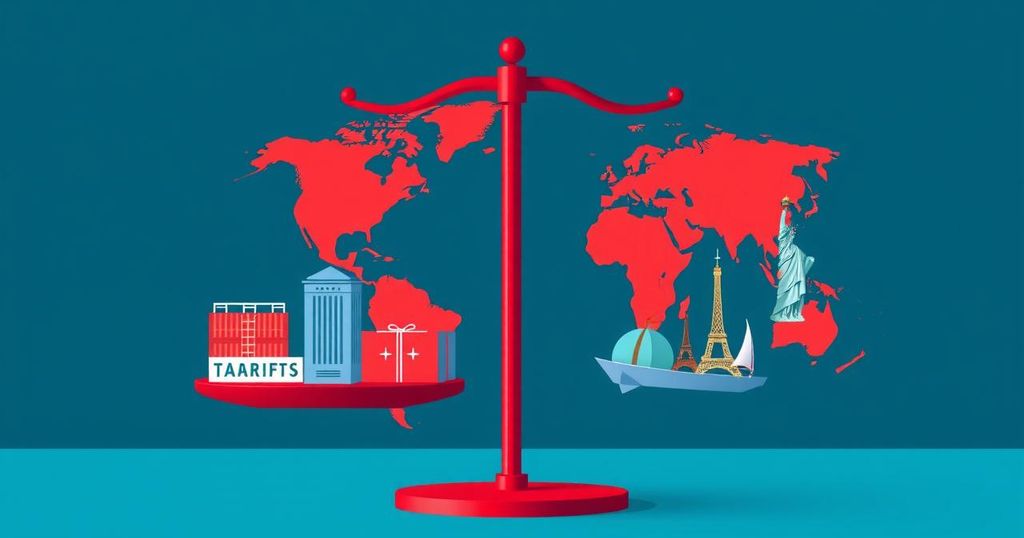White House Critiques India for Trade Barriers and High Tariffs
The White House has criticized India’s regulations and tariffs, estimating that removing these barriers could increase US exports by $5.3 billion annually. President Trump’s executive order addresses India’s high import tariffs, highlighting trade imbalances, and proposes reciprocal tariff adjustments to enhance US competitiveness in international trade.
The White House has criticized India for implementing ‘burdensome testing’ regulations across multiple sectors, which it claims raise the costs for American companies trying to sell their products in India. The White House estimates that removing these barriers could boost US exports by approximately $5.3 billion each year.
An executive order titled ‘Regulating Imports with a Reciprocal Tariff to Rectify Trade Practices that Contribute to Large and Persistent Annual United States Goods Trade Deficits’ was signed by President Trump, who described the day as “Liberation Day” for American industry. He marked April 2, 2025, as a pivotal moment in rejuvenating the American manufacturing sector.
The order highlights India’s tariffs on American goods, comparing them with the generally lower tariffs imposed by the United States. The document reveals that while the World Trade Organization (WTO) members commit to binding their tariff rates at most-favoured-nation (MFN) levels, substantial discrepancies still exist, especially in product-specific tariff rates.
For instance, the US has a modest 2.5% tariff on passenger vehicle imports, whereas India imposes a hefty 70% tariff on the same, alongside higher tariffs from China and the EU. Other examples illustrate the significant tariff differences, such as the US’s 2.5% tariff on ethanol compared to India’s 80% and Malaysia’s 40%.
During the announcement of this executive order, President Trump presented a chart that showed India’s high tariffs of 52% on US products, including issues related to currency manipulation and trade barriers, leading to the implementation of discounted reciprocal tariffs of 26% for India. He expressed his concerns about the fairness of the trade relationship, emphasizing the disproportionate tariffs.
Overall, the executive order reflects the administration’s commitment to address perceived trade imbalances and strengthen US economic interests against barriers imposed by trading partners like India, as part of a broader strategy to reinforce American industry.
In summary, the White House’s recent actions and statements underscore significant concerns regarding India’s trade practices, specifically the high tariffs and testing regulations that impede American exports. The executive order signed by President Trump aims to rectify these imbalances, projecting an increase in US exports by billions if successful. The focus remains on fostering equitable trade relationships while ensuring the protection of the American manufacturing sector.
Original Source: m.economictimes.com




Post Comment